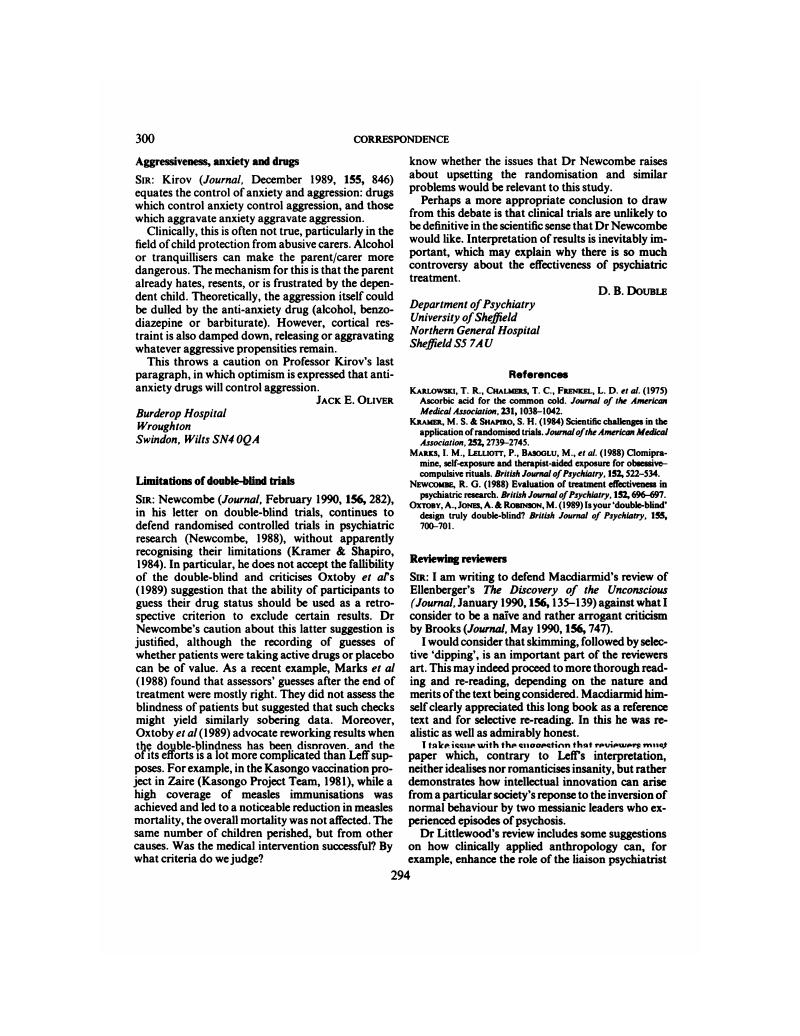No CrossRef data available.
Article contents
Limitations of double-blind trials
Published online by Cambridge University Press: 02 January 2018
Abstract
An abstract is not available for this content so a preview has been provided. As you have access to this content, a full PDF is available via the ‘Save PDF’ action button.

- Type
- Correspondence
- Information
- Copyright
- Copyright © Royal College of Psychiatrists, 1990
References
Karlowski, T. R., Chalmers, T. C., Frenkel, L. D.
et al. (1975) Ascorbic acid for the common cold. Journal of the American Medical Association, 231, 1038–1042.CrossRefGoogle ScholarPubMed
Kramer, M. S. & Shapiro, S. H. (1984) Scientific challenges in the application of randomised trials. Journal of the American Medical Association, 252, 2739–2745.CrossRefGoogle Scholar
Marks, I. M., Lelliott, P., Basoglu, M., et al. (1988) Clomipramine, self-exposure and therapist-aided exposure for obsessive-compulsive rituals. British Journal of Psychiatry, 152, 522–534.CrossRefGoogle ScholarPubMed
Newcombe, R. G. (1988) Evaluation of treatment effectiveness in psychiatric research. British Journal of Psychiatry, 152, 696–697.CrossRefGoogle ScholarPubMed
Oxtoby, A., Jones, A. & Robinson, M. (1989) Is your ‘double-blind’ design truly double-blind?
British Journal of Psychiatry, 155, 700–701.CrossRefGoogle ScholarPubMed



eLetters
No eLetters have been published for this article.